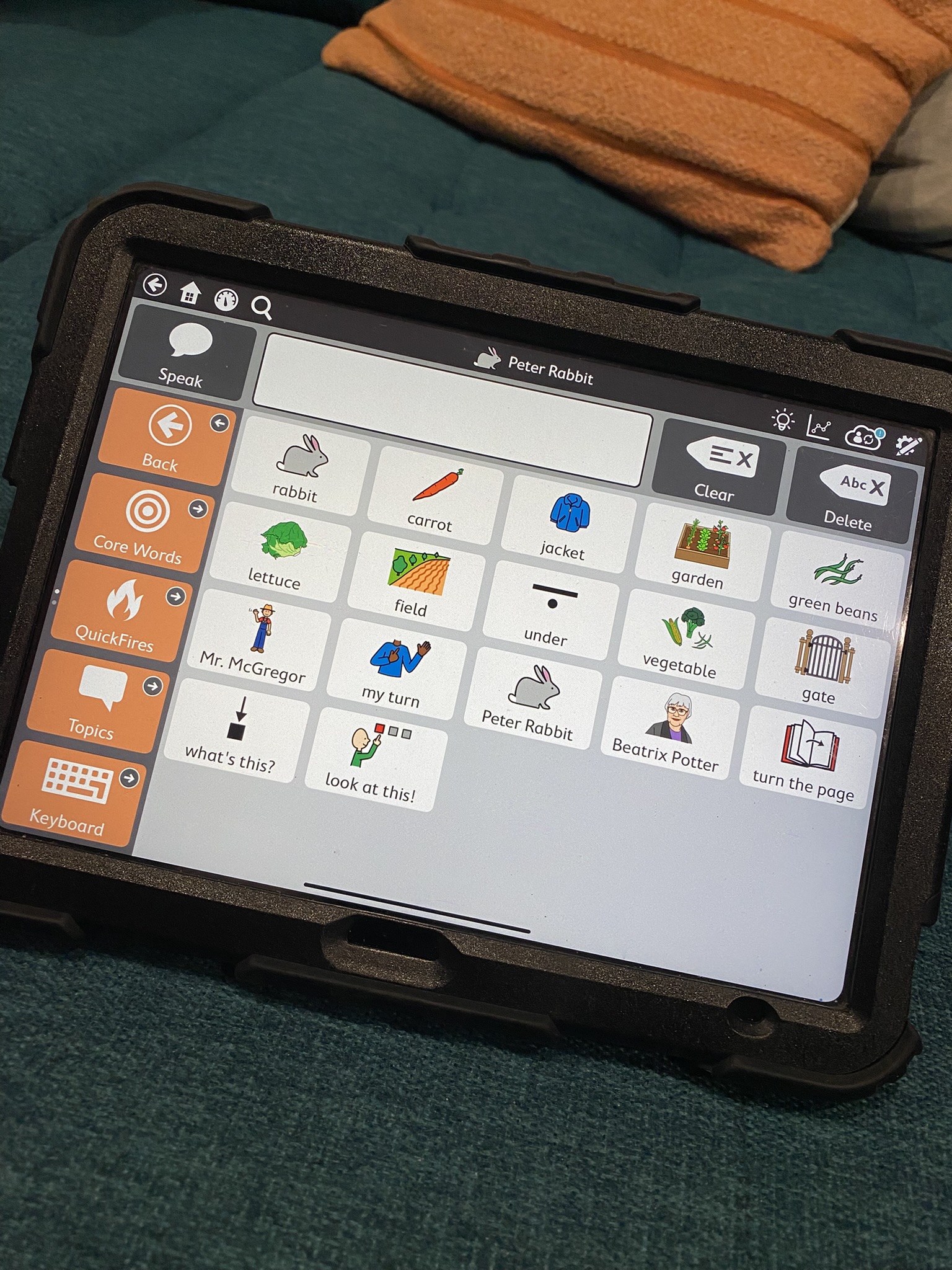The Power of Reading Aloud Series (2 of 4): Making Story Time Interactive
Oct 12, 2025
This article is part of our 4-part series on storytelling with nonverbal learners: Why Reading Aloud Matters, Making Story Time Interactive, Choosing the Right Books, and Extending the Story Beyond the Book.
As we touched on in Part 1, reading aloud does not have to look like your student sitting quietly through a whole book. For many nonverbal or minimally verbal learners, interaction can take many different forms. They might point to a picture, help turn a page, or use their AAC device to select a word or phrase. Each of these small actions turns story time into active learning.

Another way to make read-alouds engaging is to follow the child’s lead. If they are drawn to one picture, spend more time there. If they wander away, continue reading out loud so the student still hears the rhythm and language of the story. This flexibility keeps story time positive and error-free, letting students build confidence as they participate at their own pace.
Bringing It All Together
If you’re ready to make reading aloud more engaging, keep these three takeaways in mind:
-
Follow your student’s lead. Let their body language and interest guide how long and how often you read. Story time doesn’t need to look traditional to be meaningful.
-
Model communication. Use your voice, gestures, or AAC device to show how language connects to pictures, feelings, and actions in the story.
-
Celebrate small interactions. Every glance, giggle, or page turn is progress. The goal is connection, not performance.
When story time becomes flexible and pressure-free, students naturally begin to participate in their own way, and that’s where real communication growth starts.
Coming soon:
In Part 3, we’ll look at how to choose the right books and why balancing high-interest stories with age-appropriate material makes a difference.
Sources & References
- PMC — Shared Book Reading Interventions With Children With Language Impairments
https://pmc.ncbi.nlm.nih.gov/articles/PMC3319370 - The Hanen Centre — Shared Reading: How to Boost Your Child’s Language Through Storybooks
https://www.hanen.org/information-tips/parents/shared-reading - Reading Rockets — Reading Aloud to Build Comprehension
https://www.readingrockets.org/topics/reading-aloud/articles/reading-aloud-build-comprehension - AssistiveWare — How to Model AAC During Everyday Activities
https://www.assistiveware.com/learn-aac/how-to-model

Jennifer Bullock, Contributing Author
Homeschooling-experienced mom to a tween, non-speaking daughter, Jennifer is also Marketing Outreach Coordinator for The Autism Oasis. With 20+ years experience in marketing, advertising, and social media communications, you will see her occasionally supporting the blog and social media channels with various content related to Autism Oasis.
Nonverbal Autism Homeschool enrollment is currently open!
Stay connected with news and updates!
Join our mailing list to stay updated on Nonverbal Autism Homeschool courses, special events and new blog posts. You'll also receive free curriculum, inspirational messages, autism parenting hacks and more!
We hate SPAM. We will never sell your information, for any reason.

